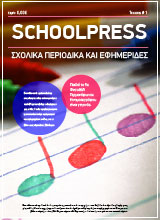By John Dimitrelias and Dimitrios-Efthymios Papachistopoulos
Our planet is filled with different geological phenomena, one of them being the volcanoes. Everyone has a vague idea of what a volcano is, with the image of a big mountain filled with lava being the first thing that comes to mind. But what is a volcano exactly? A volcano is a split in the crust of Earth’s -or any other planet’s- surface, that allows lava and gases to escape from cavities filled with magma. Volcanoes are known for their destructive outcome throughout the history of Earth, causing earthquakes, tsunamis, and explosions, as well as the extinction of whole civilizations. What are some of the biggest volcanoes on our planet, though?
1) Mauna Loa
First, in terms of destructive power and size, is the volcano Mauna Loa, which is located on the island of Hawaii (which belongs to the United States) and contains five more volcanoes. It was created from the movements of the Pacific tectonic plate over the Hawaii hotspot, like all the other volcanoes in Hawaii. It has been declared as the biggest volcano on Earth due to its length being 6,000 m and an approximate height of 4,200 m from the water’s surface. The volcano is still active, with its last eruption beginning on November 27 of 2022, just two years ago. This eruption caused the blockage of a road by burying it with lava and cutting the electrical power lines of the Mauna Loa Observatory. The volcano still poses a high threat potential.
2) Mount Kilimanjaro
Mount Kilimanjaro, located in Tanzania, Africa, is the second biggest volcano in the world and the highest mountain in Africa, with a height of nearly 5,900 m (5,895). The origins of its name are not known, but it’s meaning is believed to be “mountain of graetness”. This gianormous volcano, although still active, hasn’t erupted in about 1.9 million years. The only exception is some minor eruptions happening around it from that point onward. Mount Kilimanjaro was first officially described in 1848 by Johannen Rebmann, and in 1973 it was incorporated into the Kilimanjaro National Park. Today this ancient volcano is a popular destination for tourists, offering great hiking paths and climbing places as well as being home to many species of plants and animals.
3) Popocatepetl Volcano
The Popocatepetl volcano is the third largest volcano in the world. Located in central Mexico and just 70 km outside of Mexico City this colossal fire-imbued mountain has been terrorizing the residents of the Puebla state for hundreds of years. With a height exceeding 5,300m, Popocatepetl can be seen regularly on the horizon, as it stands menacingly as a reminder of nature’s destructive and unforgiving power. The volcano remains active even to this day, with its last eruption happening just a few months ago in February of 2024.
Sources:
https://en.wikipedia.org/wiki/Mauna_Loa
https://www.usgs.gov/volcanoes/mauna-loa
https://en.wikipedia.org/wiki/Mount_Kilimanjaro#Animals
https://education.nationalgeographic.org/resource/kilimanjaro/





























